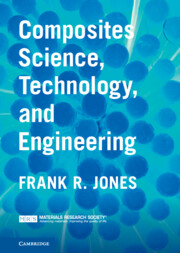Book contents
- Composites Science, Technology, and Engineering
- Composites Science, Technology, and Engineering
- Copyright page
- Contents
- Preface
- 1 Introduction
- 2 Fibres and Particulate Reinforcements
- 3 Matrices
- 4 Composites Fabrication
- 5 Mechanical Properties of Composite Materials
- 6 Mechanical Properties of Laminates
- 7 Fatigue Loading of Laminates
- 8 Environmental Effects
- 9 Joining, Repair, Self-Healing, and Recycling of Composites
- 10 Case Histories
- Index
- References
9 - Joining, Repair, Self-Healing, and Recycling of Composites
Published online by Cambridge University Press: 14 April 2022
- Composites Science, Technology, and Engineering
- Composites Science, Technology, and Engineering
- Copyright page
- Contents
- Preface
- 1 Introduction
- 2 Fibres and Particulate Reinforcements
- 3 Matrices
- 4 Composites Fabrication
- 5 Mechanical Properties of Composite Materials
- 6 Mechanical Properties of Laminates
- 7 Fatigue Loading of Laminates
- 8 Environmental Effects
- 9 Joining, Repair, Self-Healing, and Recycling of Composites
- 10 Case Histories
- Index
- References
Summary
Protocols for repair and recycling of composites are described. Future developments that embrace self-healing systems are also considered. End-of-life options such as fibre and matrix recovery are also discussed. The economics of differing approaches are briefly considered using a whole-life cost model.
- Type
- Chapter
- Information
- Composites Science, Technology, and Engineering , pp. 302 - 345Publisher: Cambridge University PressPrint publication year: 2022



